Introduction
Review of a Basic Theory for RFID antenna Design
Current and Magnetic Fields
FIGURE 1: Calculation of magnetic field B at location P due to current I on a straight conducting...
FIGURE 2: Calculation of magnetic field B at location P due to current I on the loop
FIGURE 3: Decaying of the magnetic field B vs. distance r
Induced Voltage in an Antenna Coil
FIGURE 4: A basic configuration of reader and tag antennas in RFID applications
FIGURE 5: Orientation Dependency of the Tag Antenna
Wire Types and Ohmic Losses
DC Resistance of Conductor and Wire Types
AC Resistance of Conductor
Resistance of Conductor with Low Frequency Approximation
TABLE 5: AWG Wire Chart
Inductance of Various Antenna Coils
Calculation of Inductance
FIGURE 6: A circular coil with single turn
FIGURE 7: A circular coil with single turn
FIGURE 8: N-turn multilayer circular coil
FIGURE 9: A spiral coil
FIGURE 10: N-turn square loop coil with multilayer
FIGURE 11: N-turn square loop coil with multilayer
FIGURE 12: A straight thin film inductor
FIGURE 13: Square loop inductor with a rectangular cross section
FIGURE 14: One turn Reader antenna
Example with dimension:
FIGURE 15: Two conductor segments for mutual inductance calculation
Configuration of Antenna Circuits
Reader Antenna Circuits
FIGURE 16: Various Reader Antenna Circuits
Tag Antenna Circuits
Consideration on Quality Factor Q and Bandwidth of Tuning Circuit
FIGURE 17: Various External Circuit Configurations
Bandwidth requirement and limit on circuit Q for MCRF355
Resonant Circuits
Parallel Resonant Circuit
FIGURE 18: Parallel Resonant Circuit
Series Resonant Circuit
FIGURE 19: Series Resonance Circuit
Tuning Method
FIGURE 20: Voltage vs. Frequency for Resonant Circuit
FIGURE 21: Frequency Responses for Resonant Circuit
Read Range of RFID Devices
FIGURE 22: Read Range vs. Tag Size for Typical Proximity Applications*
FIGURE 23: Read Range vs. Tag Size for Typical Long Range Applications*
Appendix A: Calculation of Mutual Inductance Terms in Equations 36 and 37
Appendix B: Mathlab program example for Example 8
References
Trademarks
Worldwide Sales
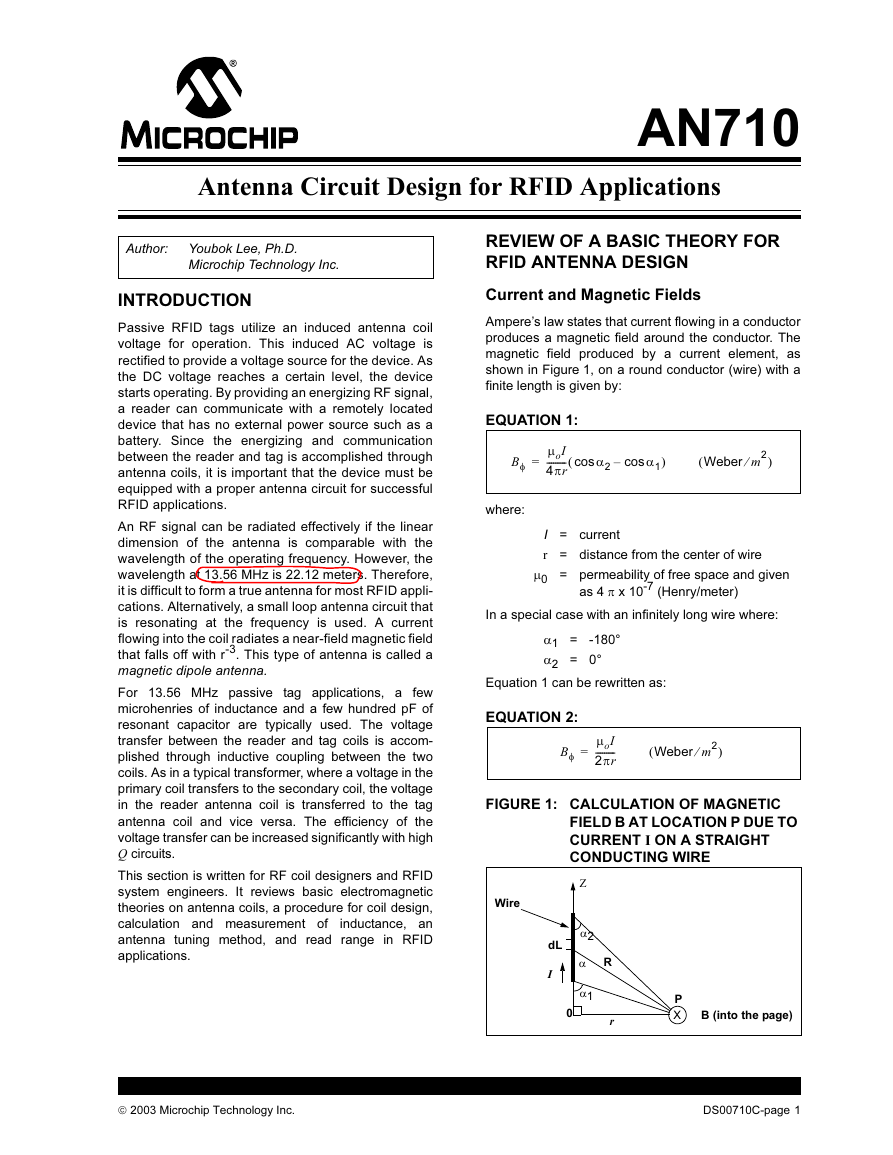
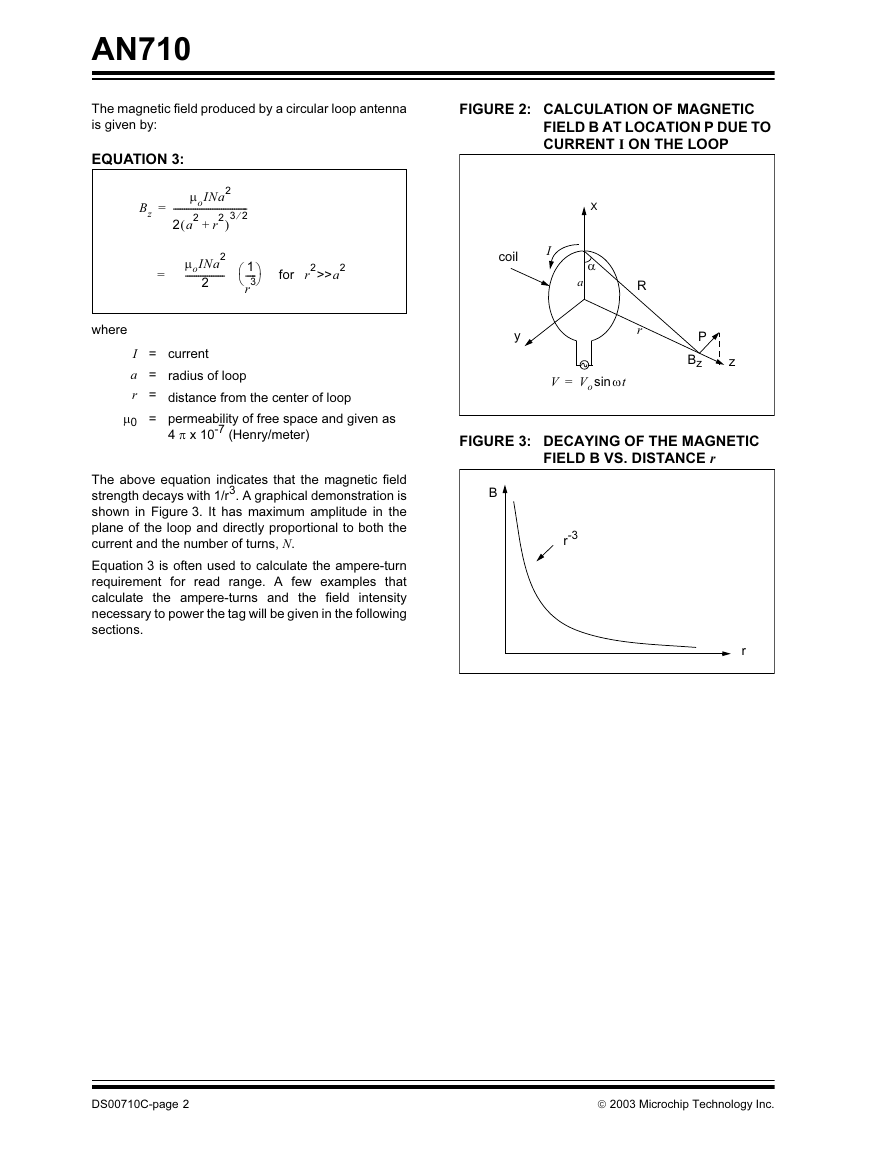

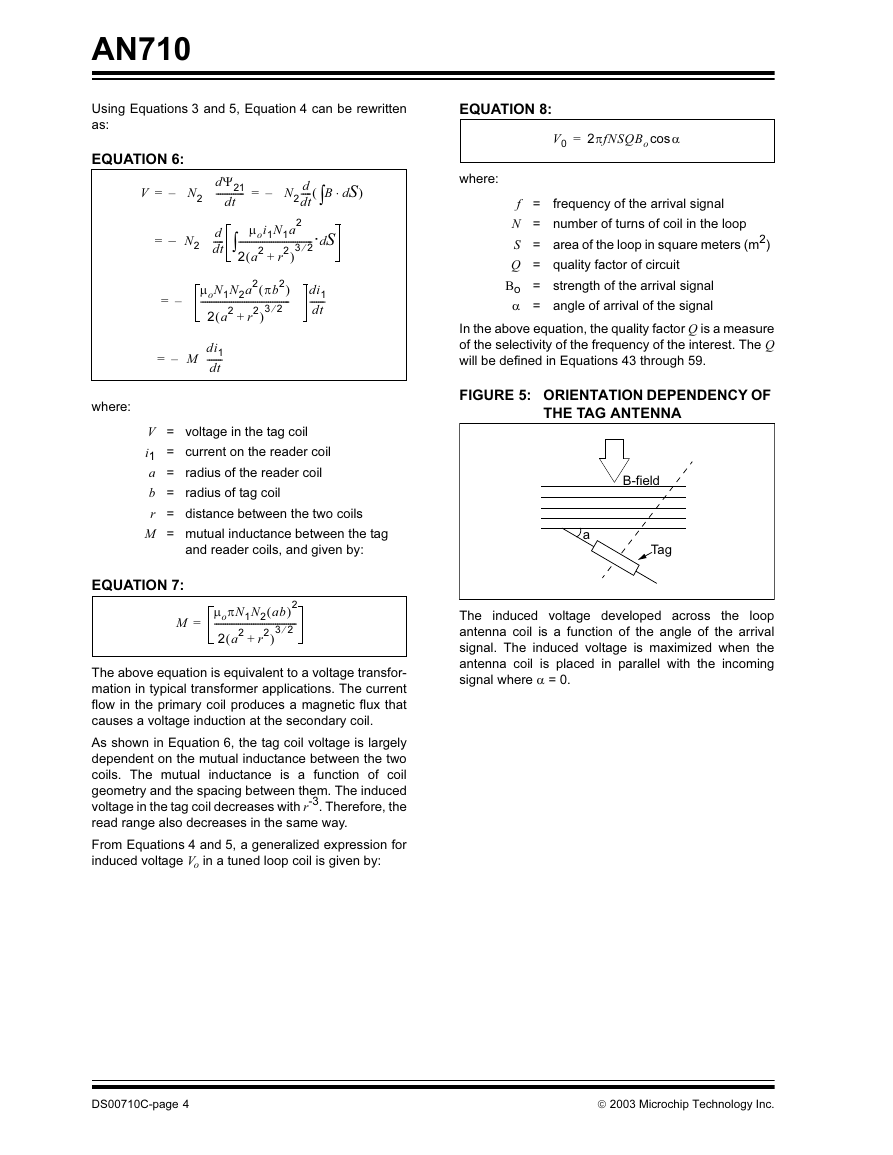
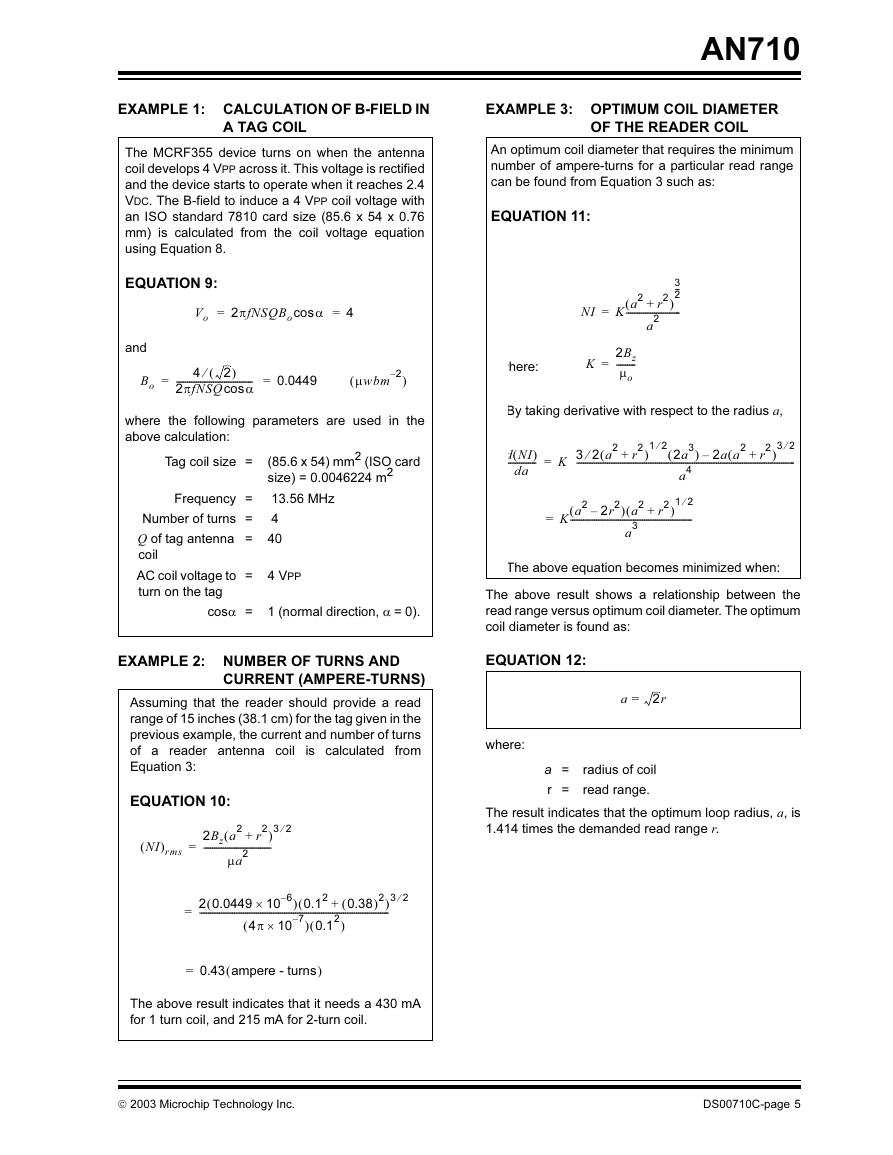
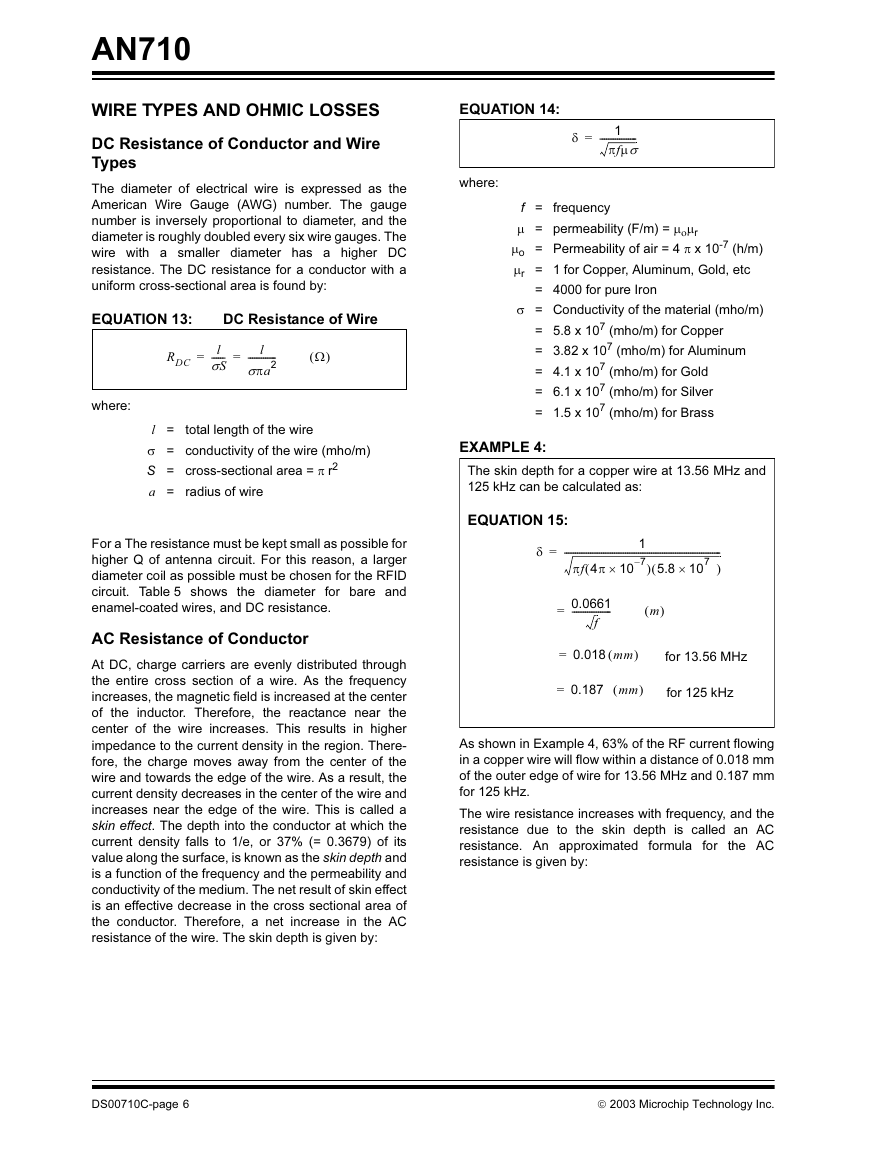
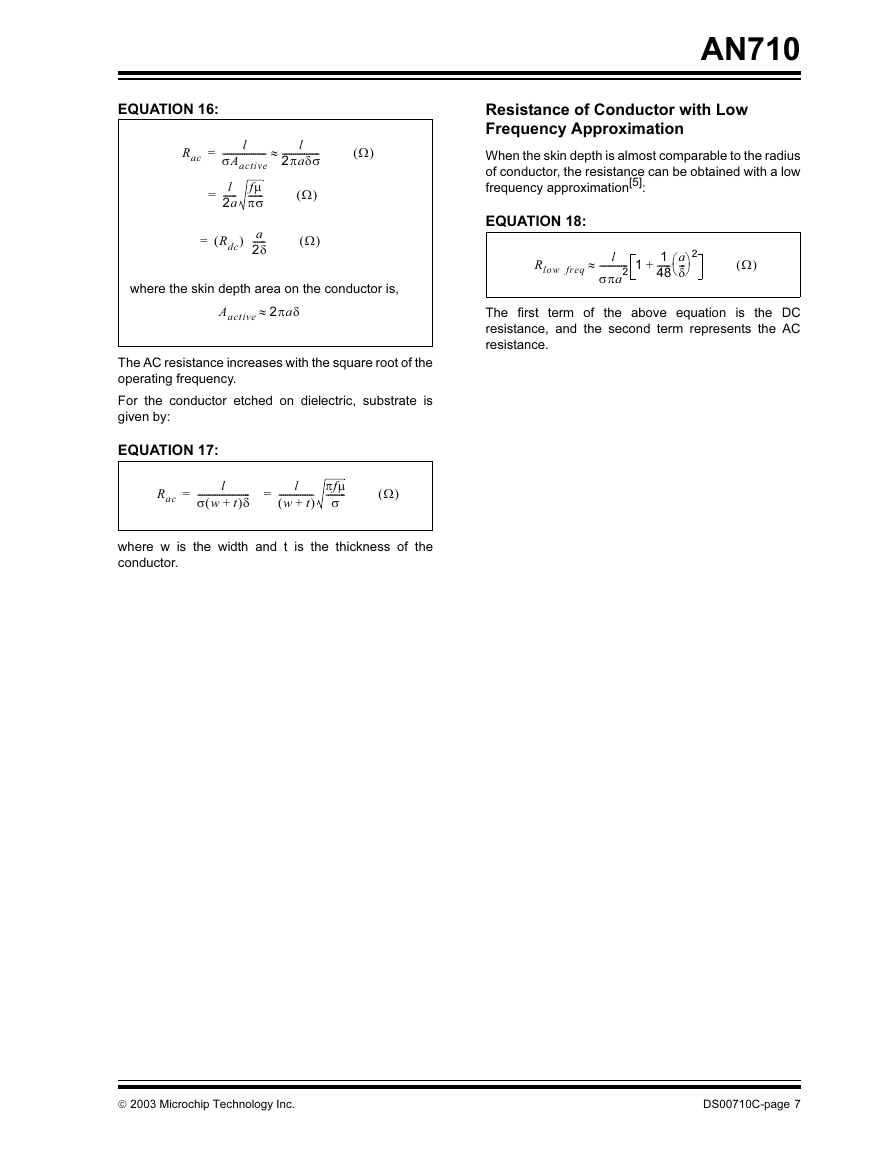
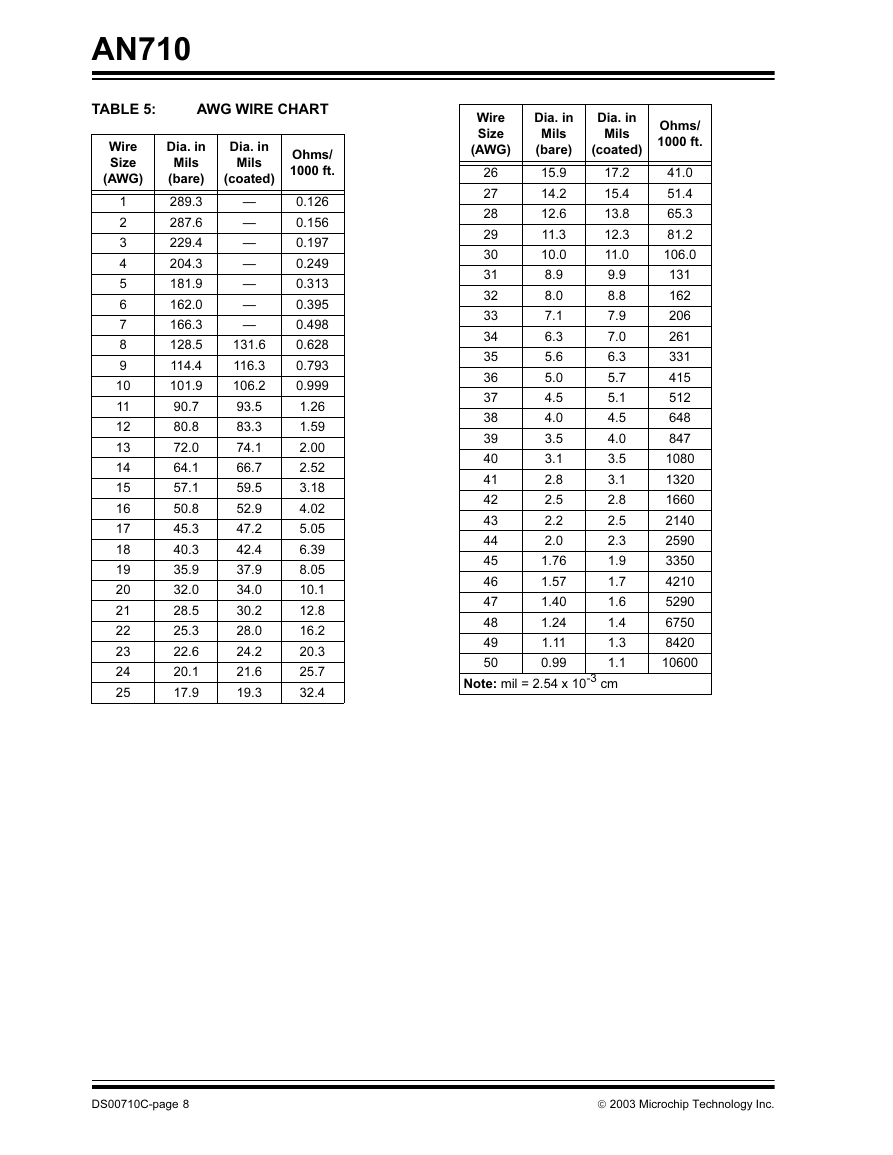








 2023年江西萍乡中考道德与法治真题及答案.doc
2023年江西萍乡中考道德与法治真题及答案.doc 2012年重庆南川中考生物真题及答案.doc
2012年重庆南川中考生物真题及答案.doc 2013年江西师范大学地理学综合及文艺理论基础考研真题.doc
2013年江西师范大学地理学综合及文艺理论基础考研真题.doc 2020年四川甘孜小升初语文真题及答案I卷.doc
2020年四川甘孜小升初语文真题及答案I卷.doc 2020年注册岩土工程师专业基础考试真题及答案.doc
2020年注册岩土工程师专业基础考试真题及答案.doc 2023-2024学年福建省厦门市九年级上学期数学月考试题及答案.doc
2023-2024学年福建省厦门市九年级上学期数学月考试题及答案.doc 2021-2022学年辽宁省沈阳市大东区九年级上学期语文期末试题及答案.doc
2021-2022学年辽宁省沈阳市大东区九年级上学期语文期末试题及答案.doc 2022-2023学年北京东城区初三第一学期物理期末试卷及答案.doc
2022-2023学年北京东城区初三第一学期物理期末试卷及答案.doc 2018上半年江西教师资格初中地理学科知识与教学能力真题及答案.doc
2018上半年江西教师资格初中地理学科知识与教学能力真题及答案.doc 2012年河北国家公务员申论考试真题及答案-省级.doc
2012年河北国家公务员申论考试真题及答案-省级.doc 2020-2021学年江苏省扬州市江都区邵樊片九年级上学期数学第一次质量检测试题及答案.doc
2020-2021学年江苏省扬州市江都区邵樊片九年级上学期数学第一次质量检测试题及答案.doc 2022下半年黑龙江教师资格证中学综合素质真题及答案.doc
2022下半年黑龙江教师资格证中学综合素质真题及答案.doc